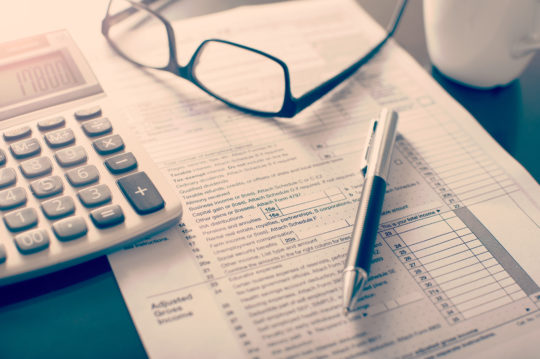Running your own gig on the side has a lot of advantages. There’s the ability to build something meaningful of your own, and to make a bit of money, too. But like any money making idea, when there’s a profit, you’ll have to pay taxes to the IRS.
How Do Side Business Taxes Work?
If you make more than $400 in profit in a year, you’ll have to file a tax return with the IRS. If you think you’ll owe more than $1,000 in taxes this year, you’ll have to file quarterly tax payments throughout the year to stay in the good graces of the IRS. If you are filing your taxes jointly with your spouse, you can also change their withdrawal to meet your tax obligation throughout the year.
If you think you’ll owe more than $1,000 in taxes this year, it gets more complicated. Most business owners file quarterly tax payments throughout the year to stay in the good graces of the IRS. If you are filing your taxes jointly with your spouse, you can also change their withdrawal to meet your tax obligation throughout the year.
As a business owner, you’ll write a larger check than what you pay from your regular salary. As an employee, your Social Security tax is split between you and your employer. As a business owner, you’re responsible for the full amount. Your income will be taxed at the full 12.4% for Social Security, 2.9% for Medicare, as well as your income tax rate.
Even though you have to pay self-employment tax on side business income, you benefit from write-offs that aren’t available to regular employees.
The Bright Side of Paying Taxes as a Business
There are advantages to running your own business. You pay taxes on the profits, not on the income alone.
This means you can deduct business expenses like your home office or co-working space, website, telephone, internet expenses, and office supplies directly from your profits. If you work from home, remember that you’re only able to deduct the portion of your supplies that was used for business use. A home office must be your principal place of business, a place where you meet clients, or be detached from home to be eligible for deduction. Remember, you’ll want to keep receipts so you can take advantage of every business deduction possible.
Make Sure It’s a Side Business, Not a Hobby
Your side business might have emerged from your hobby. But the IRS wants to make sure that if you’re getting the benefit of the additional write-offs, you’re also paying taxes on income.
Take someone who restores sailboats for fun. They might really like to write off all of their supplies from their ordinary income. But if you don’t regularly make a profit, it’s a hobby and not a business.
The IRS assumes that you’re running a business (and not trying to write off a hobby) if you make a profit for 3 of the last 5 years, including the current year. If your business is in breeding, showing, training, or racing horses, this extended to two of the last 7.
If you haven’t met those guidelines, you’re not automatically categorized as a hobbyist. If the IRS chooses to look into it further, your business would be evaluated based on whether or not you kept accurate books, devoted a considerable amount of time and energy to the business, and tried to convert the unprofitable business to a profitable one. In other words, did you run your business like a business?
Figuring Out Side Business Taxes
As a side business owner, your time is valuable. There’s no need for you to become a tax expert. Instead, use some of your extra income to get the help of a Certified Public Accountant. They’ll help you figure out your tax obligations for your business.

